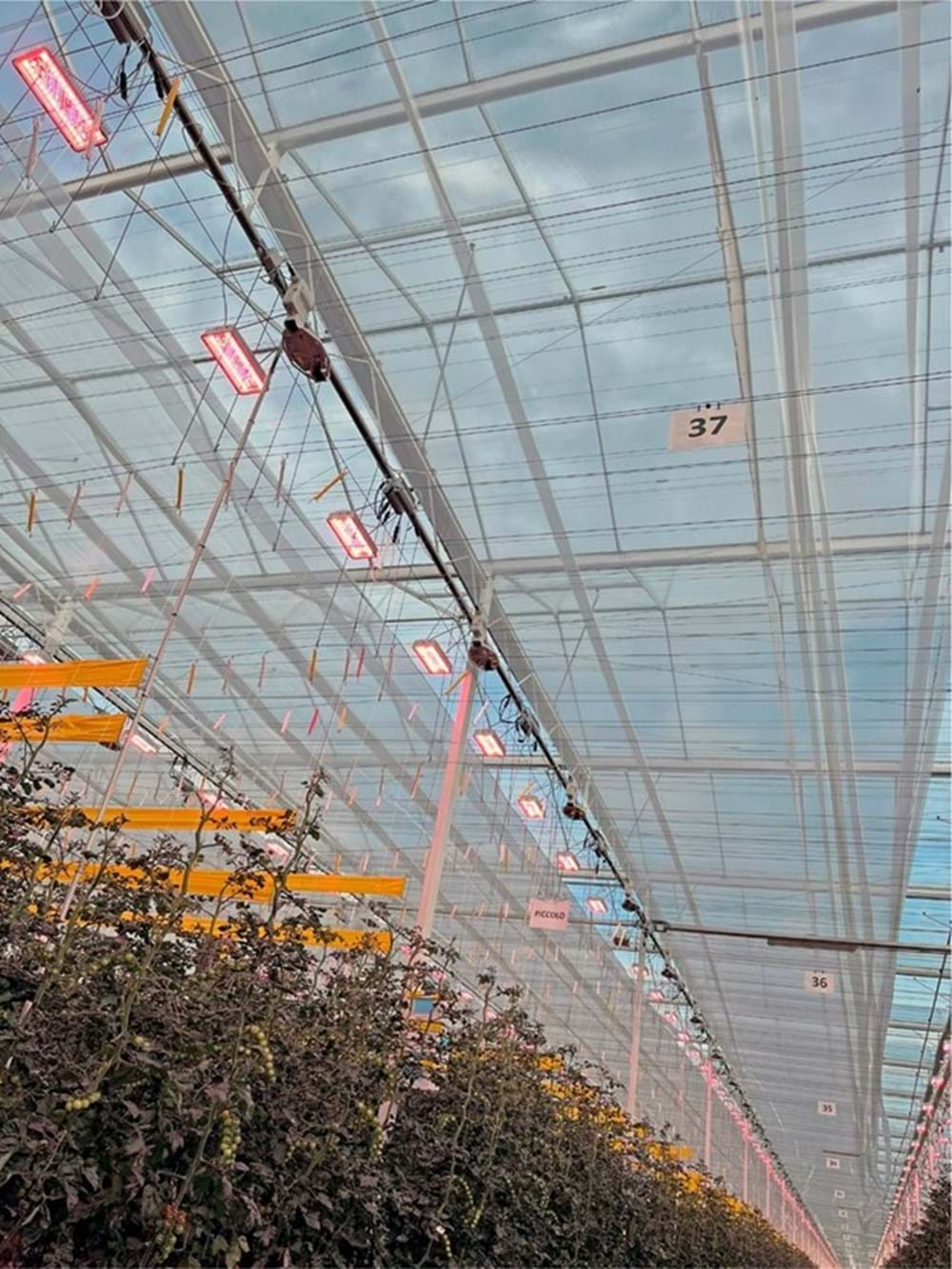Due to the high energy prices last winter, many growers left their SON-T lighting off or only continued with LED, even if they had a hybrid installation. But LED emits much less radiant heat, which can reduce the heat input in the greenhouse by up to 40 percent. This lower heat input must then be partially compensated by extra heat in the heating pipes. A second energy screen in combination with vertical fans can largely compensate for this, says climate consultant Bart Bakker. "With this you can not only dehumidify, but also create a much more equal and active greenhouse climate, without using a relatively expensive minimum pipe."
The energy transition is in full swing in greenhouse horticulture, driven by volatile energy prices, unpredictable geopolitics and new climate policies. Switching to LED lighting is popular, but not without consequences for the greenhouse climate. “As a result, the heating is often turned up a bit. In the end, you end up with a slightly lower energy consumption on balance, but that heat has to come from somewhere and that also costs money. It is better to think of an additional energy screen. You then have more insulation, but not necessarily more heat in the greenhouse.”

Latent heat
Where the cultivation space is more insulated, but extra moisture is produced by the illuminated crop, there is a need for dehumidification. However, devices that not only dehumidify, but also return the released latent heat to the greenhouse air can consume a lot of power. “That is not all for nothing. If you generate that electricity yourself, you cannot resell it. In a cold period you can usually put the recovered heat to good use, but usually not in the autumn and spring.” He continues: “You see, for example, in gerbera cultivation, where they have been running full-LED for a year now, problems can still arise in the relatively dense leafy crop. Under LED light and a double screen you get stagnant air faster, especially in the microclimate. If you then insert a tube under the crop, this will boost the root pressure too much and you will get a negative spiral, which you actually want to break with the right means. You do want air movement, but not too much root pressure or evaporation, especially at night and early in the morning.”
Absolute moisture
By exchanging greenhouse air above and below the screen, growers can reduce the absolute humidity in the growing area and stimulate the removal of moisture through convection by means of vertical air movement. Bakker: “What you used to do with your pipe, namely dry firing, can be done much more economically with a fan. Because a minimum pipe of 30 to 35 degrees Celsius easily costs 25 to 30 W/m2 of heat input. A vertical ClimaFlow fan, which has the same effect, only costs 1 W/m2. At a certain point, the heat rises from a pipe to the top of the greenhouse, where you don't actually want that heat. You can force that heat down again with a vertical fan, so that you can use it more often. That is much more effective and efficient.
Ventilate vertically
The ClimaFlow vertical ventilation system also allows cultivation at a higher humidity. Bakker: “Creating evaporation and lowering the RH costs energy. You can allow a higher RH by creating a gentle air movement in the crop. That saves energy since you then do not have to heat through the skylights and that does not cost any money. You have to be careful with that, of course, but it is the cheapest solution.” The most important message is: ensuring an even greenhouse climate. “Stop screen gaps as much as possible, that only causes cold and inequality. See if you can create a more equal climate with vertical fans under a double screen, so that you also have much more accurate climate control.”
Grow unlit
Those who grow without lighting should pay extra attention to the light transmission, especially when purchasing a double screen. The NEN standard is a useful tool for that purpose, says Bakker. “That is an independent measurement method that makes it possible to objectively compare screen properties. Every extra percent of light counts and we can also calculate what that extra 1, 2 or 3 percent will yield for you in terms of energy savings. We can compare those figures with other types of screens.” Finally, “The difference in return can be as much as 10 percent. That is really a lot, especially with double screens. Then it weighs even more. You already have very little light in the winter. You just have to bring in every percent of light. So be well informed in advance!”
Interested in learning more?
Contact a Svensson Climate Expert.